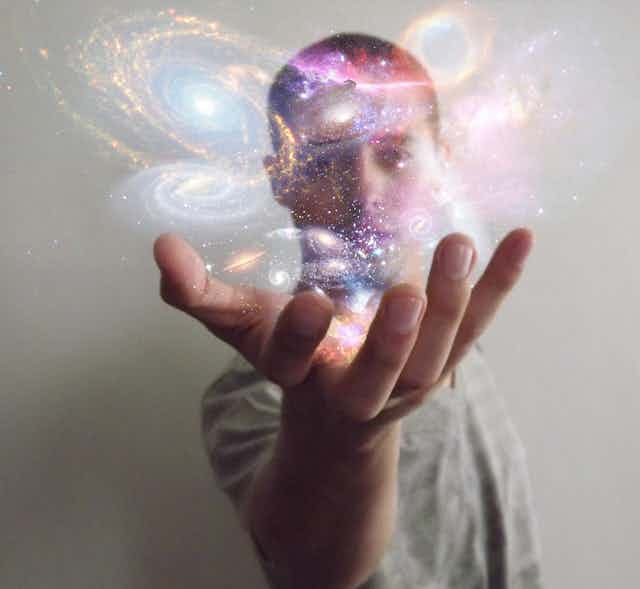A piece of the galaxy formation puzzle may have fallen into place, thanks to a team of European and American astronomers peering into the depths of our early universe.
According to new research published in Nature, the galaxy GOODS-N-227 might show us how the most massive galaxies are formed – and why it’s been so hard to find them before now.
As it takes time for light to travel great distances, looking at the most distant galaxies reveals what the universe was like at its very earliest stages. Using NASA’s Hubble and Spitzer space telescopes, it is possible to see galaxies in their infancy – barely two or three billion years old.
But unless you’re willing to wait a couple hundred million years, it’s impossible to actually observe changes in individual galaxies.
Instead, the idea has been to use snapshots of different galaxies, seen across a wide range of distances, to construct a rough evolutionary sequence. It’s akin to using photos from school yearbooks to figure out how people age.
Using some of the world’s biggest telescopes, Erica Nelson of Yale University has led a team looking for early versions of the most massive galaxies in the early universe.

These galaxies have already formed upwards of 100 billion stars – on a par with the most massive elliptical galaxies found locally – in just a few billion years.
There is one very big difference between these very distant galaxies and their modern-day counterparts. Although they are similar in terms of their mass, the distant galaxies are much more compact – a bit like the difference between a billiard ball and a beach ball. (Except that in this case, the billiard ball is 6,000 light-years across.)
The idea, according to Nelson, is that these are “just the very dense centres of very massive galaxies, before they built all the other stuff around them over the next 10 billion years.”

How do massive galaxies form?
But the question remains: how do these cores form in the first place? All of the massive cores found so far have already finished their star formation.
Several different theories have been proposed for how those cores may have been constructed, but astronomers had never seen core formation actually occurring.
This is where GOODS-N-774 comes in. GOODS-N-774 definitely qualifies as massive and as compact. It has about the same number of stars as our Milky Way, but is less than a tenth the size in diameter.
The difference is that GOODS-N-774 is not done yet: it is still forming stars at a furious rate of about 100 new stars per year. At that rate, GOODS-N-774 could have formed in as little as 1 billion years.
Where are the rest?
But if this is how the cores of massive galaxies form, the next big question is why more galaxies such as GOODS-N-774 haven’t been found already.
One simple idea is that if these galaxies form very quickly, then it is just unlikely to catch galaxies during the brief formation phase – kind of like glancing at the clock at exactly 12.34:56pm.
But Nelson and her team suggest another reason why such strongly star-forming galaxies might be hard to spot: they’re hidden.
What matters is dust – the fine particulate ash that permeates star-forming galaxies. Clouds of dust make a galaxy appear redder and fainter, in the same way that smoke from a bushfire reddens and obscures the sun.
Nelson argues that in the very dense forming cores, the dust clouds are thick enough to block almost all the starlight. GOODS-N-774 does indeed show the telltale signs of thermal emission from hot dust, seen at far infrared wavelengths.
If Nelson is right, starlight might not be the best way to find such compact star-forming galaxies. It might be easier to spot the infrared light emitted by the dust instead – and could be the only way to finally deduce when and how the most massive galaxies form.

